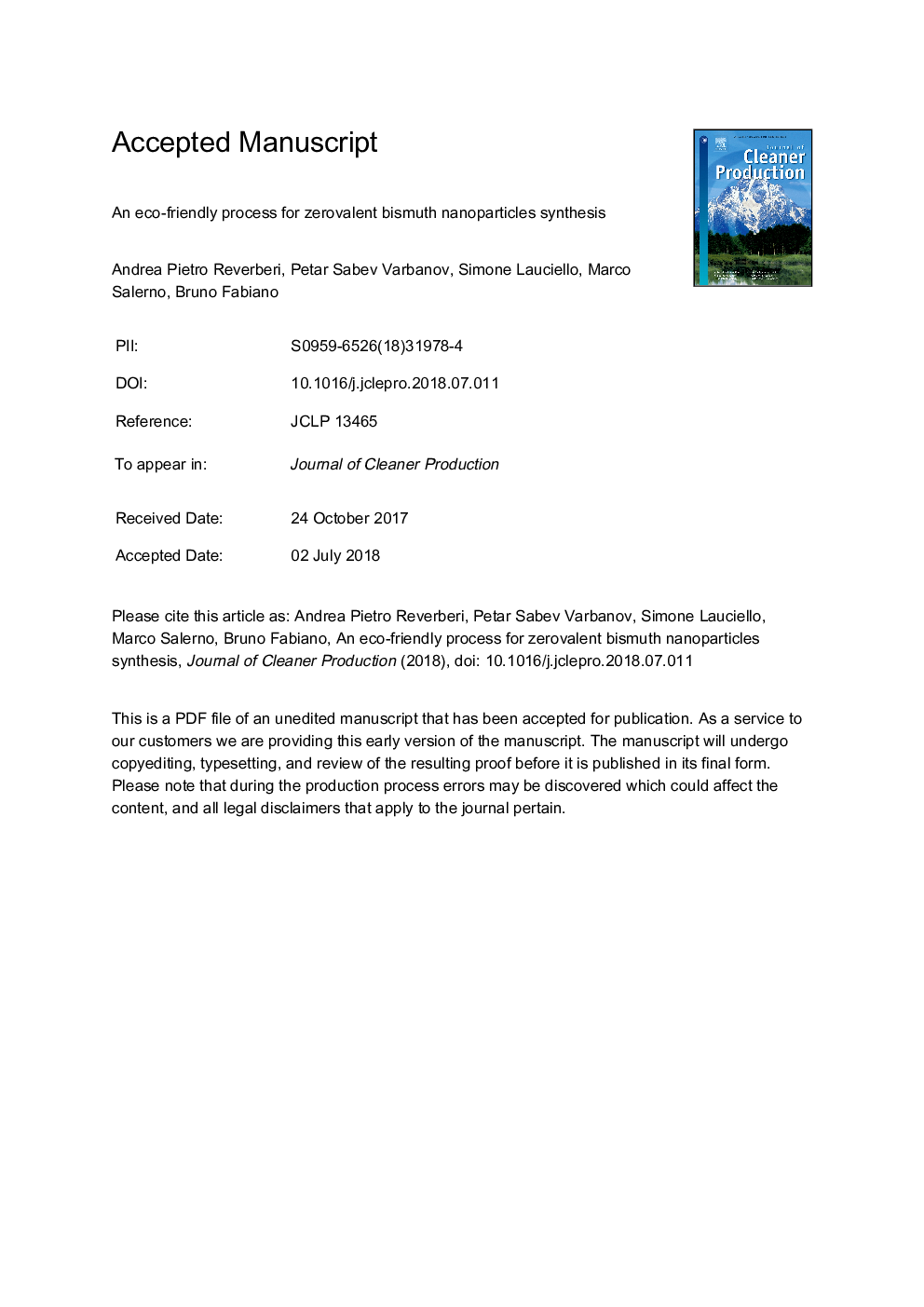| Article ID | Journal | Published Year | Pages | File Type |
|---|---|---|---|---|
| 8093403 | Journal of Cleaner Production | 2018 | 25 Pages |
Abstract
A two-pot bismuth nanoparticle synthesis based on a combination of a bottom-up method and a disaggregation technique is proposed. These steps are sequential in time and are operated in an aqueous and organic solvent, respectively. In the first phase, a cementation process with aluminium and zinc as sacrificial metals in compact form is carried out using mannitol, saponin and maltodextrin as eco-friendly capping agents for bismuth nanoparticles. In the second phase, a wet ball-stirring process allows obtaining a primary particles release in propylene glycol with a satisfactory stability. The products are characterized by dynamic light scattering and transmission electron microscopy for the size and by X-ray diffraction for both size and chemical composition. The diameters of bismuth nanoparticles obtained using both zinc and aluminium as reductants lie in the range of 10-120â¯nm independently of the capping agents. With respect to conventional one-pot processes using sacrificial metals in powder, this technique allows obtaining a high purity metallic bismuth at the end of the cementation step without requiring further purification treatments, thus avoiding a waste of chemical reagents in view of a cleaner production and sustainability. All stages of preparation are carried out at room temperature for a better energy saving and safety management. This process may represent a valid alternative to standard techniques based on noxious reductants or high temperature synthesis, thus promoting a shift towards a green nanoparticle synthesis.
Related Topics
Physical Sciences and Engineering
Energy
Renewable Energy, Sustainability and the Environment
Authors
Andrea Pietro Reverberi, Petar Sabev Varbanov, Simone Lauciello, Marco Salerno, Bruno Fabiano,
